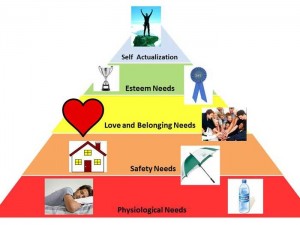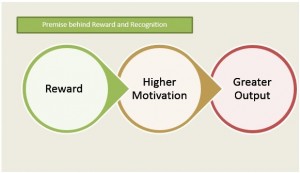Everyone has certain needs or wants, which causes us to do certain things (behavior), which further achieves satisfaction. Firstly, by inquiring into Maslow’s Hierarchy of Needs, we come to realize that all of us are motivated to achieve specific needs once our very “basic” needs are met. I focus on this particularly because some children’s lower level requirements (i.e. physiological, and safety) may be deficient. This could be a factor that greatly influences a student’s motivation in class, and has been observed within my own practicum classroom. For example, if a student is lacking proper sleep, or a healthy diet, this can affect higher level needs (i.e. a student’s ability to focus and learn will be a concern). Only if a student’s basic needs are satisfied will they become motivated to engage and perform optimally. As teachers, it is essential to be aware of students that are deficient in the lower level requirements, and make sure they are satisfied so they can move into their growth need (self-actualization). If students are not well fed, do not feel safe in their environment, or struggle to maintain healthy relationships and sense of belonging in the classroom, intrinsic motivation will not occur. Thus, it is paramount that as a teacher we are cognizant of our student’s needs and well-being.
Secondly, it is essential to look at the Reinforcement Theory, which was proposed by Psychologist, BF Skinner. He coined the term Operant Conditioning as a learning process in which behavior is sensitive to or controlled by its consequences. The four types of Operant Conditioning include: Positive Reinforcement, Negative Reinforcement, Punishment and Extinction. Both Positive and Negative Reinforcement strengthen behavior while Punishment and Extinction weaken behaviour. This theory is primarily based on extrinsic motivation, as the behavior is being manipulated by the result. For example, if a student is rewarded with a treat for doing a good job (positive reinforcement), or reprimanded if they do not obtain the grade that their parents expected (punishment), it will influence a child’s behavior through external mechanisms (not internal factors). This type of reinforcement has to be carefully integrated as part of self-regulating student behavior. Teachers want students to achieve a mature state, but also want to leave punishment as a last resort. According to Woolfolk & Perry (2015), punishment can have unwanted side-effects and does not necessarily teach more productive behavior.
More than Extrinsic & Intrinsic Motivation…
Moreover, according to Reiss and Havercamp (1998), we cannot divide motivation into two separate categories. Psychologists once believed that Hulls drives (known as extrinsic motivation) and non-drives (intrinsic motivation) were distinct entities. Hulls drives were broken into hunger, thirst, sex, and pain/anxiety avoidance, whereas non-drives were considered non-survival needs (curiosity, competence, autonomy and play). However, it has been concluded that human motives are far too diverse to fall into solely intrinsic and extrinsic classifications. The assumptions of many psychologists lacked construct validity– an appropriate measure or claim of evidence. The idea was falsely related to “mind-body dualism”, whereby mental events were separate from physical events (Reiss, 2004); thus, giving extrinsic-intrinsic motivation a similar taxonomy as mind-body dualism. However, these motives are multifaceted (genetically diverse), and are not reliably measured. Researchers have now shifted their focus onto validating and applying 16 universal reinforcements (Reiss Motivation Profile) to a wide range of phenomena; i.e. school motivation, business coaching, and relationships (Reiss, 2004).
*The next section of this blog will provide more information on the most recent theoretical research with regards to intrinsic and extrinsic motivation.




Maslow’s hierarchy of needs, from a current neuroscience perspective, is completely understandable and applicable to learning. The cognitive, physical, and emotional parts of the human brain were at one time thought to be separate but are now known to be completely interconnected.
In light of this knowledge, it makes sense to me that there is not a defined division between extrinsic and intrinsic motivation.
I am looking forward to reading more about the most current research in this area.